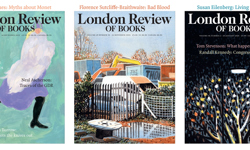Admission one: I woke up last night, at some ungodly hour, thinking of digital magazines. Specifically, whether the publishing industry’s strategic approach toward them is entirely correct. I know… It’s a sad existence I lead, but Bauer won’t be the only media company debating this right now, so let me explain further and you’ll see where I’m going with it.
I got up and went downstairs. I put the kettle on and picked up one of the print mags – in this instance, Trout Fisherman – lying on my coffee table. Being a keen fly angler, I flicked through its pages as my kettle did its thing, admiring the beautiful photography and meticulously thought-out instruction articles. I thought how much I love print magazines. But I also love digital mags. And websites.
I poured myself a mug of decaf, questions going over and over in my brain: how can we get all these amazing content platforms to work in harmony, to complement each other seamlessly, so our brands can grow? How do we educate and train editorial, sales and marketing teams, so they understand they have to work harder than ever before, in new content genres they may not be comfortable with, in order to get through the tough times? How do we make it clear that while times are difficult, they’re also incredibly exciting, as there is real opportunity out there?
Admission number two: when I wake in the mornings, the first thing I do is look at my iPhone. I check my Twitter timeline and the newsfeeds on my Facebook page. I may click on some content links that interest me, I might post a Tweet myself. Invariably, I’ll end up visiting the beautifully mobile-responsive BBC website to see what’s been going on while I’ve been slumbering.
On one such morning recently, I awoke to see a Tweet from the preposterously named @themediaisdying account, linking to a feature on www.robertnewman.com entitled, ‘Are Magazine Apps Dead?’
Until then I hadn’t a clue who Robert Newman was (turns out he’s a design guru from the Big Apple), but the question posed in the article’s title was relevant to me and the debate resulting in a round-table discussion between him and some fellow digi-mag experts was fascinating. Some of the points they raised were particularly pertinent:
1. It’s a formative industry
I once worked on Autocar magazine, which was launched in 1895. This puts things into perspective: the iPad came out in April 2010 and Apple Newsstand the year after. It’s early days! Right now, we need to be patient and get the basics right. By that, I mean producing great content on the right digital platforms, marketing effectively, all the time looking at ways of improving UX, functionality and customer support.
2. PDF replica editions don’t work
Bauer’s enhanced PDF replica editions are profitable and therefore do work, assuming that’s your key measure of success. But they are not a longer-term solution. They are a stop-gap. They don’t look good on phones and the user experience isn’t great. As our CEO Paul Keenan once reputedly said, a flat PDF replica mag on a tablet is like “listening to radio on the TV”. How long their lifespan will be remains a hot topic of debate, especially as tech companies don’t like them either. Just ask Google.
3. Break from print deadlines
I recently gave a digital magazine strategy presentation to a group of tough Bauer journalists from titles like Mojo, Empire, Zoo and FHM. As part of that, I suggested we dynamically publish content in a magazine app on a frequent basis, breaking away from the rigidity of print deadlines.
Much like Evo, for example.
Engagement with the user is retained throughout the publishing cycle, which is more attractive to advertisers… and we can break news-style feature exclusives and reviews more efficiently (and be more likely to grow readership and revenues as a result). The very same content published in the app one day may appear in print two, three or four weeks down the line, when the traditional mag comes out.
A question I was asked straight away was: “If we do that, what’s the point of a print magazine?”
A fair question, but the addresser was not seeing the bigger picture. The objective is to grow brands by diversifying content distribution digitally and monetising successfully. This isn’t a threat to print. Actually, it’s a potential lifeline to print, as it’s going to future-proof brands and eventually allow them to grow – which means, customers can get the content they want, when and how they want it. Including print.
I saw some figures today in the media section of the Guardian comparing print circs of 2003 versus 2013. The difference was stark. While no silver bullet has yet appeared that will take our industry back a decade, digital is at least providing some light at the end of the tunnel in the form of growth. Print is in decline and it’s early days for digital magazine apps, but neither is dead. The industry’s evolving and someone’s going to get it right one of these days. If that’s me, maybe I’ll stop waking up in the middle of the night worrying about it all!












